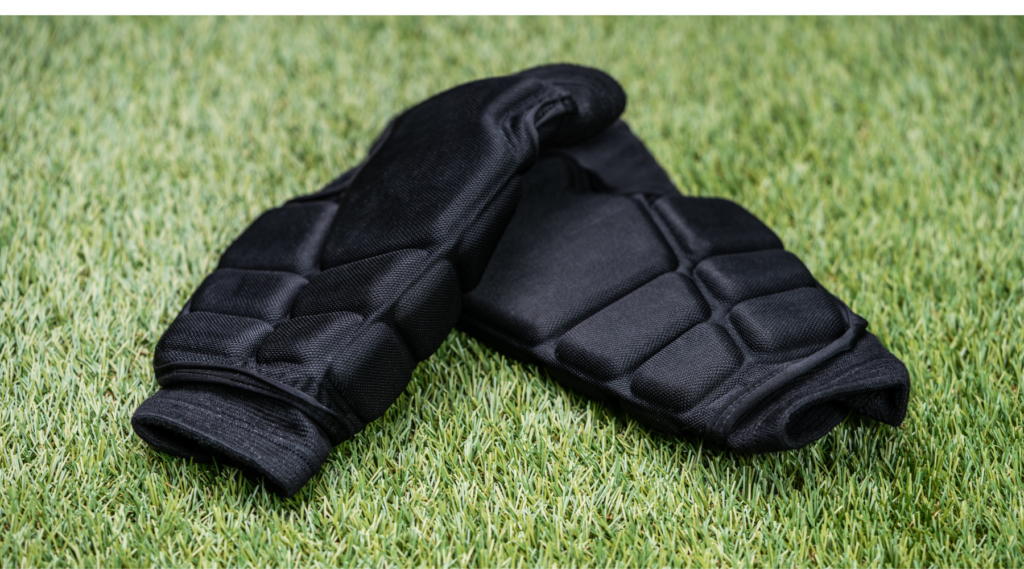Shin Guards: Sports like football and soccer bring a prospect of competition, and that is mostly why they want to protect themselves equally as they are performing. Among the varieties of protective gear, the best in the history of protective gear is shin guard. They guard your lower legs from any injury inflicted by opponents during play. It does not mean that only professional players should use them; they are required by any athlete in any competition. No matter how heavy or light the user is, understanding the types, fit, and features of shin-guards will make major differences when playing.
This guide will tell you everything about shin guard, starting with the right ones and other factors, how they actually function, and their significance in injury prevention.
Why Shin Guards Are Essential
They are used to protect your tibia, which is one of the bones usually hurt in contact sports like playing soccer or football.Kicks, tackles and other collisions do happen often, which puts the legs at risk.Football shin pads help reduce the impact and thus reduce the chances of severe injuries such as fractures, bruises or deep cuts.
Contrary to protection, shin-guards provide psychological comfort. Knowing that you are safe makes one play with more confidence and aggression.
Types of Shin Guards
Different shin-guards vary depending on the type of sport you play, the position in which you play, and your preference. Understanding these differences will help you to make the best choice:
1. Slip-in Shin Guard
They are lightweight and inserted underneath the socks. Experienced players love them due to their minimal feel and easy mobility. They require a shin guard supporter or tight-fitting socks to hold them in place.
2. Ankle Shin Guard
This gives further coverage and padding around the ankle. This is perfect for the younger players or starting players, as it gives you full lower leg coverage preventing both shin and ankle injuries.
3. Shin Guard with Straps
These consist of adjustment straps with which you can easily fix the guard without other attachments. They are easy and fast to use and leave a perfect spot for wearing and taking them out.
4. Integrated Sock Shin Guard
These are already attached to a soccer sock, meaning that there is no hassle of having separate gear. This is mostly used by young players for its convenience.
Each guard type has its pros and cons. Slip and strap versions are common in the professional shin guards soccer kits, while ankle guards are best for beginners needing some extra support.
Choosing the Right Size
The right size is what makes a pair of shin-guards shine. A too-small guard won’t protect, while a too-big one is nothing less than movement-restricting.
To experiment with the right size:
- Measure the distance just below the knee to just above the ankle.
- Referring to manufacturer size charts.
- Make sure it should cover at least 60 up to 75 percent of your shin.
Most brands offer sizes based on height and leg length to find the perfect fit easily.
The Role of Shin Guard Supporters
Shin supporter is a very useful and essential item for users of slip-in shin-guards. It could be sleeves or compression bands to help hold the shin guard in place while exercising. They are entirely made of breathable fabric and are touted to enhance comfort and stability. For some supporters, it comes with pockets to hold guards, thus eliminating the need for adjustment every now and then.
A shin guard supporter keeps an athlete’s shin guard in place because it is designed in such a way that even while training or practicing for hours with quick footwork and tackles, the shin guard does not shift from their position.
Shin Guards for Soccer vs. Football
Though they seem to have similar specifications, the shin guards soccer players wear have slight differences from those of football:
- Soccer Shin Guards: Typically shin guard are lighter and more agile, as they need to be. Many players prefer slim, slip-in types that don’t restrict movement.
- Football Shin Guards: Tend to be bulkier and offer more protection due to the physical nature of the sport. Some models even include hard shells and thicker padding.
One should always think of the sport specifics when choosing sports gear.
Materials Used in Shin Guard
Modern shin-guards are made of very advanced materials guaranteeing maximum protection and comfort.
- Plastic: Most commonly used for its impact resistance.
- Foam Padding: For comfort and shock absorption.
- Carbon Fiber: Lightweight and incredibly tough, most generally used in very high-end models.
- EVA Foam: Also the most used material for its comfort and flexibility.
Depending on the material, the shin guards will differ from weight to durability and feel against your leg. Professional-level football shin guards are often made with different materials at once to confer better performances.
Maintenance and Care
Taking care of your shin-guards ensures they last longer and remain hygienic:
- Clean regularly: Wipe down after every use and air-dry to avoid odor buildup.
- Avoid machine washing: Unless the label allows.
- Store dry: To prevent bacterial growth.
Hygiene is important for players using shin guard supporters, since a sweat build-up nowadays causes skin irritation.
Final Thoughts
Whether you’re sprinting on a soccer pitch or just tackling someone in a football game, you’re going to want shin guards. Because it isn’t only going to protect your shins from painful impacts, but also really give you that confidence to play your best. With lots of varieties of styles, materials, and sizes, there is a perfect pair for every athlete.
You are a complete novice or a well-known pro, shin guards and shin guard supporters are the critical equipment accessories that make all the difference between protection and injury. Never joke about protection; gear yourself appropriately and enjoy your sport in safety.
For more sports gear insights and guides like this one, visit our site europefeeds.com and gear up the smart way!

